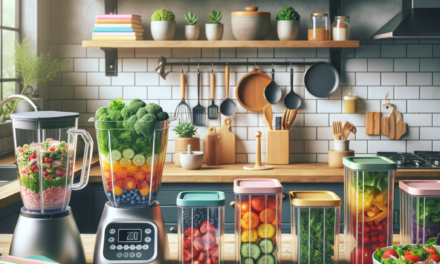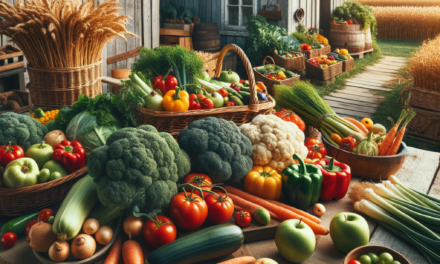Introduction
Embracing organic and non-GMO foods is more than a dietary choice; it’s a commitment to your health and the environment. Organic foods are grown without synthetic pesticides, fertilizers, or genetically modified organisms (GMOs), ensuring that what you consume is as close to its natural state as possible. This guide will help you navigate the world of organic and non-GMO choices, particularly as we enter the spring season, when fresh produce becomes more abundant.
Understanding Organic and Non-GMO Labels
Before diving into organic shopping, it’s essential to understand what the labels mean:
- USDA Organic: This label indicates that the food is grown and processed according to federal guidelines addressing soil quality, animal raising practices, pest and weed control, and the use of additives.
- Non-GMO Project Verified: This seal means the product has been tested and meets the standards for GMO avoidance.
Step-by-Step Guide to Choosing Organic and Non-GMO Foods
Step 1: Prioritize Your Purchases
Going completely organic can be costly, so start by prioritizing. The Environmental Working Group (EWG) releases a list of the ‘Dirty Dozen’ each year, identifying fruits and vegetables with the highest pesticide residues. Prioritize these items in their organic form to reduce your exposure to harmful chemicals.
Step 2: Shop Seasonally and Locally
Spring offers a bounty of fresh produce. Shopping at local farmers’ markets can provide you with seasonal organic produce at a better price. Local produce is also likely to be fresher and more nutrient-dense since it hasn’t traveled long distances.
Step 3: Read Labels Carefully
Not all products that claim to be ‘natural’ are organic or non-GMO. Look for the USDA Organic and Non-GMO Project Verified seals to ensure the quality of your purchase.
Step 4: Grow Your Own
Consider starting your own organic garden. Even a small herb garden on your windowsill can be a step towards healthier eating.
Step 5: Be Budget-Smart
Organic food can be more expensive, but you can be smart about your budget by buying in bulk, choosing store brands, and looking for sales and discounts.
Additional Tips and Common Mistakes to Avoid
- Tip: Use apps or websites that alert you to sales on organic products at local stores.
- Tip: Join a community-supported agriculture (CSA) program to get seasonal organic produce directly from a local farm.
- Mistake: Assuming all products at health food stores are organic or non-GMO. Always check the labels.
- Mistake: Overlooking the importance of washing organic produce. While organic produce has fewer pesticides, it still needs to be washed to remove dirt and bacteria.
Conclusion
Making the switch to organic and non-GMO foods is a positive step towards better health and a more sustainable lifestyle. By understanding labels, prioritizing your purchases, shopping seasonally, and being budget-conscious, you can make informed choices that benefit both your body and the planet. Remember that every small change can have a significant impact on your wellness journey.
For those in the UK looking to shop for organic and non-GMO products online, Amazon.co.uk offers a wide variety of options. Additionally, organizations such as the Soil Association provide resources and certification for organic products, ensuring high standards. To stay informed on the best deals for organic foods, consider using apps like Latest Deals, which can help you find discounts on healthy, sustainable options.










